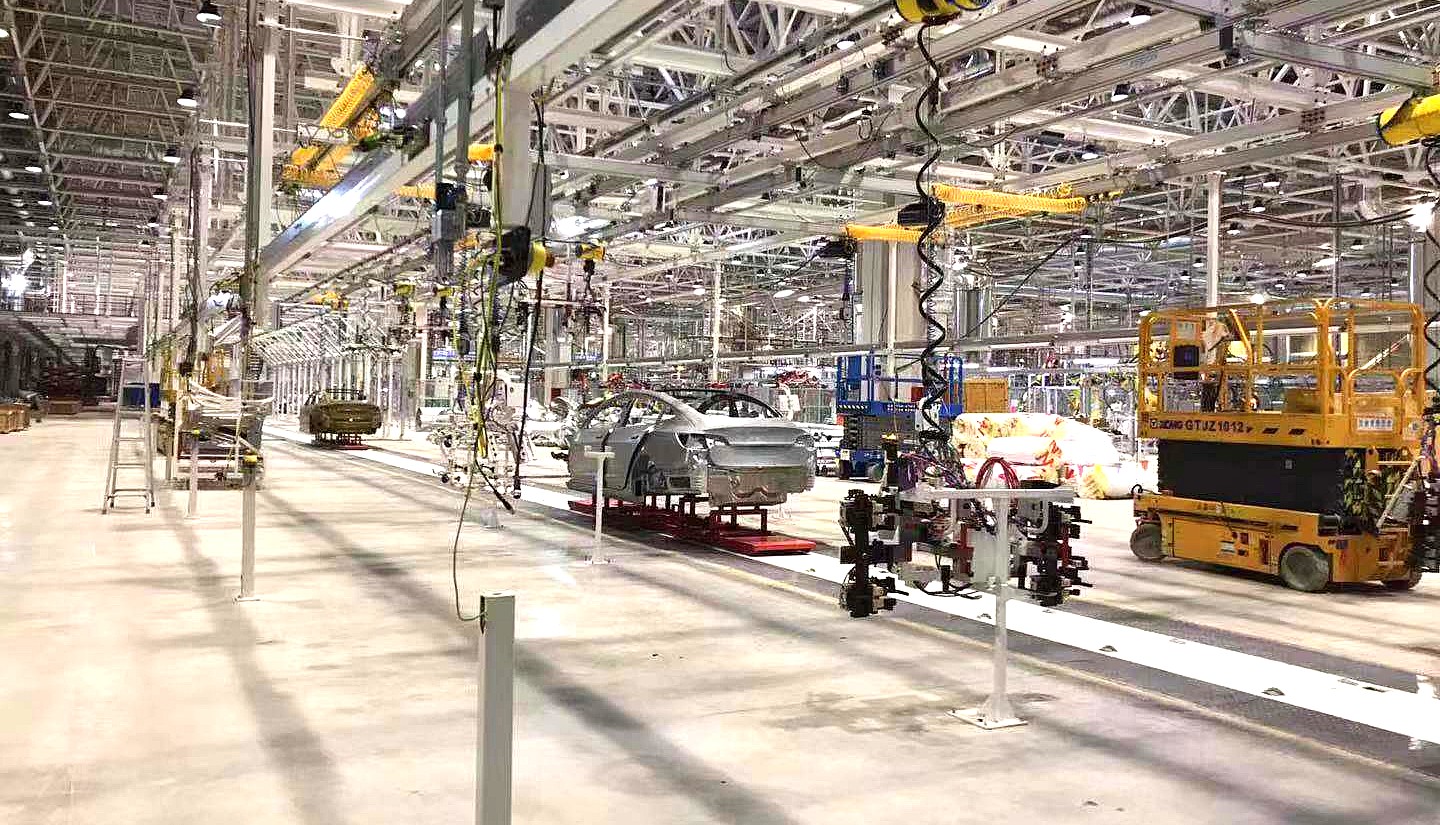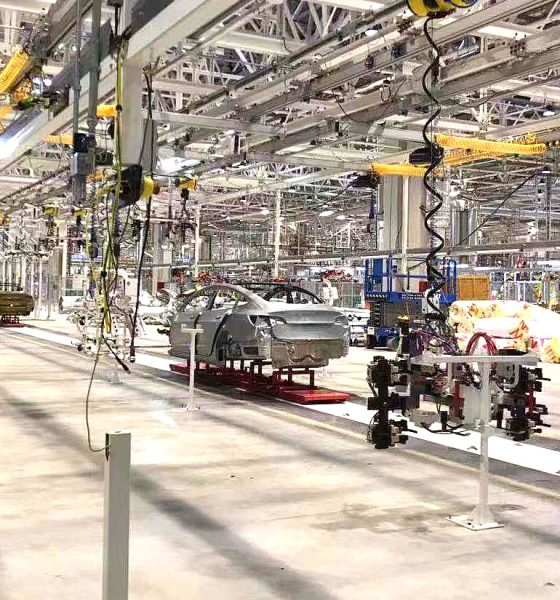Thailand’s automotive industry is changing for the better, and it took the COVID-19 pandemic to accelerate the shift to electrification.
Since the pandemic has started, shutdowns of automotive factories have allowed a shift to electric vehicles from combustion engines to take shape.
900,000 Thai citizens are employed in the automotive industry. Now, many of them are returning to work after a long layoff because of the pandemic.
Because so many automotive manufacturing facilities have been shut down for an extended period, there is a significant parts shortage. The lack of materials is favorable for a push toward EVs because the battery-powered cars require significantly fewer parts compared to their gas-powered counterparts. An EV uses between 1,500 and 3,000 parts per vehicle, while a combustion engine uses 30,000 total parts.
Therefore, auto part makers are forced to adapt to keep their doors open and reduce the loss of jobs.
Thai auto-parts manufacturers are focusing on other industries like medical equipment to keep the economy afloat as the pandemic could cause over 300,000 jobs to be lost, Reuters reported.
Research firm IHS Markit forecasts that Thailand’s automotive demand could be sliced in half to 1.14 million vehicles because of the virus.
Bangkok-based Siam Filter Products Limited has avoided laying off its employees by increasing the production of parts that are needed in other industries as large orders from automakers have decreased significantly because of the pandemic.
Instead of producing auto parts, Siam Filter has started creating industrial and medical filters, along with developing a new variation of facial mask that has been used to contain the spread of COVID-19 through the air.
Siam employee Kasem Tiankanon said that many of the company’s workers are concerned about the future, but the transition to producing new products is necessary. “We cannot just stay in the auto business. If you don’t adjust, you’ll die.”
Before the pandemic started removing employees from their posts, Thailand’s manufacturing companies were beginning to transition toward the production of electric vehicle parts to prepare for a sustainable future that the country’s government is pushing for.
The Thai Government was looking to increase the presence of EVs by 2030 to 750,000 vehicles as pollution concerns started to worry politicians. Asian-based automakers, like Honda and Nissan, are pushing toward electrification, and the two companies have received $888 million in investments to begin producing hybrid and battery-electric vehicles in an attempt to be sustainable.
Other companies, like China’s top pickup truck maker, Great Wall Motor Company, need more support to start producing EVs. Great Wall obtained two former General Motors plants in Thailand in February for SUV and pickup production. Still, the company’s Vice President told Reuters it needs government support to begin producing sustainable vehicles.
The Thai automotive industry has reached a breaking point. The lack of parts because of the halt in manufacturing has provided the country’s car industry with a parts shortage. However, the deficit can be maintained by producing electric vehicles instead of combustion engine cars.
Kiranee Tammapiban-udom of Maverick Consulting Group said, “The industry is approaching an inflection point. It will be left behind if policies do not accommodate EV manufacturing, its ecosystem, and consumption.”

News
Tesla is not sparing any expense in ensuring the Cybercab is safe
Images shared by the longtime watcher showed 16 Cybercab prototypes parked near Giga Texas’ dedicated crash test facility.

The Tesla Cybercab could very well be the safest taxi on the road when it is released and deployed for public use. This was, at least, hinted at by the intensive safety tests that Tesla seems to be putting the autonomous two-seater through at its Giga Texas crash test facility.
Intensive crash tests
As per recent images from longtime Giga Texas watcher and drone operator Joe Tegtmeyer, Tesla seems to be very busy crash testing Cybercab units. Images shared by the longtime watcher showed 16 Cybercab prototypes parked near Giga Texas’ dedicated crash test facility just before the holidays.
Tegtmeyer’s aerial photos showed the prototypes clustered outside the factory’s testing building. Some uncovered Cybercabs showed notable damage and one even had its airbags engaged. With Cybercab production expected to start in about 130 days, it appears that Tesla is very busy ensuring that its autonomous two-seater ends up becoming the safest taxi on public roads.
Prioritizing safety
With no human driver controls, the Cybercab demands exceptional active and passive safety systems to protect occupants in any scenario. Considering Tesla’s reputation, it is then understandable that the company seems to be sparing no expense in ensuring that the Cybercab is as safe as possible.
Tesla’s focus on safety was recently highlighted when the Cybertruck achieved a Top Safety Pick+ rating from the Insurance Institute for Highway Safety (IIHS). This was a notable victory for the Cybertruck as critics have long claimed that the vehicle will be one of, if not the, most unsafe truck on the road due to its appearance. The vehicle’s Top Safety Pick+ rating, if any, simply proved that Tesla never neglects to make its cars as safe as possible, and that definitely includes the Cybercab.
Elon Musk
Tesla’s Elon Musk gives timeframe for FSD’s release in UAE
Provided that Musk’s timeframe proves accurate, FSD would be able to start saturating the Middle East, starting with the UAE, next year.

Tesla CEO Elon Musk stated on Monday that Full Self-Driving (Supervised) could launch in the United Arab Emirates (UAE) as soon as January 2026.
Provided that Musk’s timeframe proves accurate, FSD would be able to start saturating the Middle East, starting with the UAE, next year.
Musk’s estimate
In a post on X, UAE-based political analyst Ahmed Sharif Al Amiri asked Musk when FSD would arrive in the country, quoting an earlier post where the CEO encouraged users to try out FSD for themselves. Musk responded directly to the analyst’s inquiry.
“Hopefully, next month,” Musk wrote. The exchange attracted a lot of attention, with numerous X users sharing their excitement at the idea of FSD being brought to a new country. FSD (Supervised), after all, would likely allow hands-off highway driving, urban navigation, and parking under driver oversight in traffic-heavy cities such as Dubai and Abu Dhabi.
Musk’s comments about FSD’s arrival in the UAE were posted following his visit to the Middle Eastern country. Over the weekend, images were shared online of Musk meeting with UAE Defense Minister, Deputy Prime Minister, and Dubai Crown Prince HH Sheikh Hamdan bin Mohammed. Musk also posted a supportive message about the country, posting “UAE rocks!” on X.
FSD recognition
FSD has been getting quite a lot of support from foreign media outlets. FSD (Supervised) earned high marks from Germany’s largest car magazine, Auto Bild, during a test in Berlin’s challenging urban environment. The demonstration highlighted the system’s ability to handle dense traffic, construction sites, pedestrian crossings, and narrow streets with smooth, confident decision-making.
Journalist Robin Hornig was particularly struck by FSD’s superior perception and tireless attention, stating: “Tesla FSD Supervised sees more than I do. It doesn’t get distracted and never gets tired. I like to think I’m a good driver, but I can’t match this system’s all-around vision. It’s at its best when both work together: my experience and the Tesla’s constant attention.” Only one intervention was needed when the system misread a route, showcasing its maturity while relying on vision-only sensors and over-the-air learning.
News
Tesla quietly flexes FSD’s reliability amid Waymo blackout in San Francisco
“Tesla Robotaxis were unaffected by the SF power outage,” Musk wrote in his post.

Tesla highlighted its Full Self-Driving (Supervised) system’s robustness this week by sharing dashcam footage of a vehicle in FSD navigating pitch-black San Francisco streets during the city’s widespread power outage.
While Waymo’s robotaxis stalled and caused traffic jams, Tesla’s vision-only approach kept operating seamlessly without remote intervention. Elon Musk amplified the clip, highlighting the contrast between the two systems.
Tesla FSD handles total darkness
The @Tesla_AI account posted a video from a Model Y operating on FSD during San Francisco’s blackout. As could be seen in the video, streetlights, traffic signals, and surrounding illumination were completely out, but the vehicle drove confidently and cautiously, just like a proficient human driver.
Musk reposted the clip, adding context to reports of Waymo vehicles struggling in the same conditions. “Tesla Robotaxis were unaffected by the SF power outage,” Musk wrote in his post.
Musk and the Tesla AI team’s posts highlight the idea that FSD operates a lot like any experienced human driver. Since the system does not rely on a variety of sensors and a complicated symphony of factors, vehicles could technically navigate challenging circumstances as they emerge. This definitely seemed to be the case in San Francisco.
Waymo’s blackout struggles
Waymo faced scrutiny after multiple self-driving Jaguar I-PACE taxis stopped functioning during the blackout, blocking lanes, causing traffic jams, and requiring manual retrieval. Videos shared during the power outage showed fleets of Waymo vehicles just stopping in the middle of the road, seemingly confused about what to do when the lights go out.
In a comment, Waymo stated that its vehicles treat nonfunctional signals as four-way stops, but “the sheer scale of the outage led to instances where vehicles remained stationary longer than usual to confirm the state of the affected intersections. This contributed to traffic friction during the height of the congestion.”
A company spokesperson also shared some thoughts about the incidents. “Yesterday’s power outage was a widespread event that caused gridlock across San Francisco, with non-functioning traffic signals and transit disruptions. While the failure of the utility infrastructure was significant, we are committed to ensuring our technology adjusts to traffic flow during such events,” the Waymo spokesperson stated, adding that it is “focused on rapidly integrating the lessons learned from this event, and are committed to earning and maintaining the trust of the communities we serve every day.”










